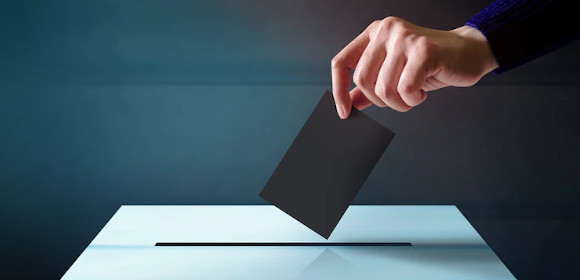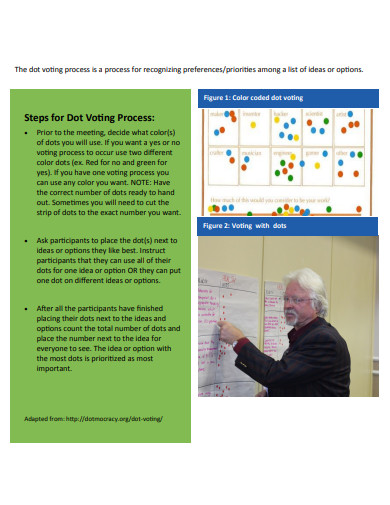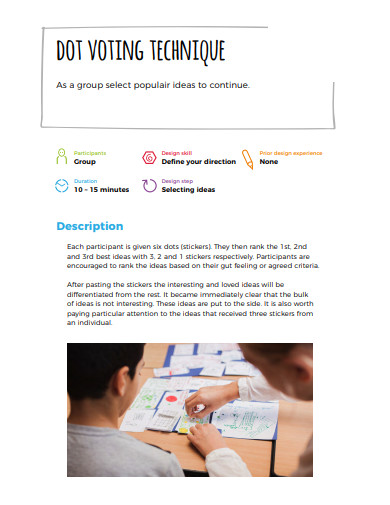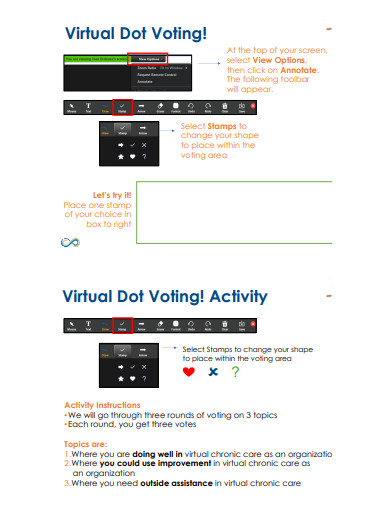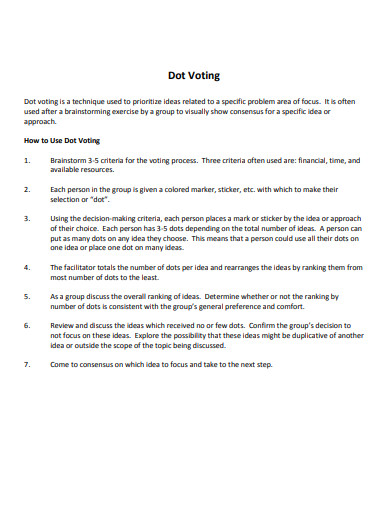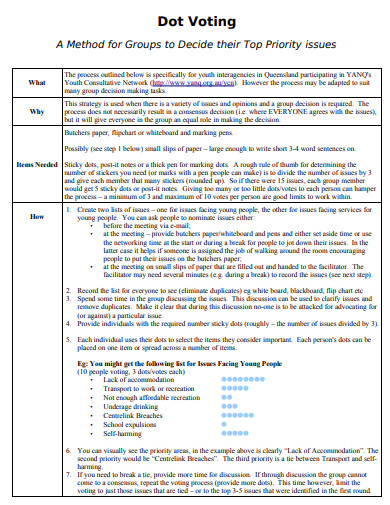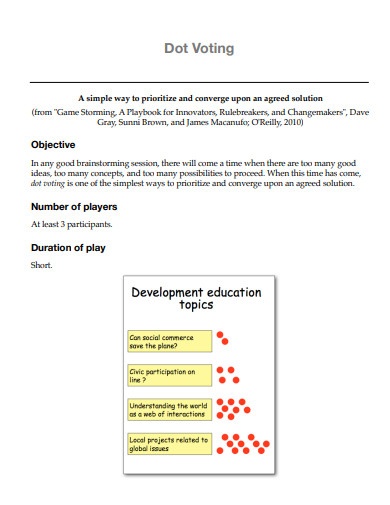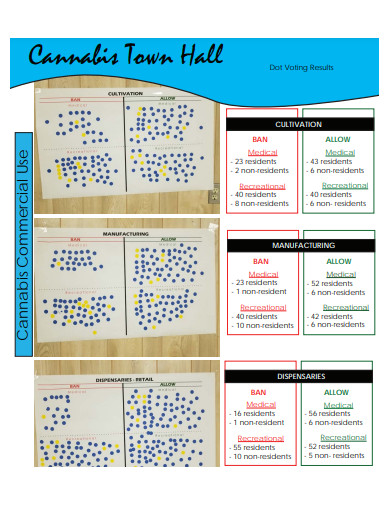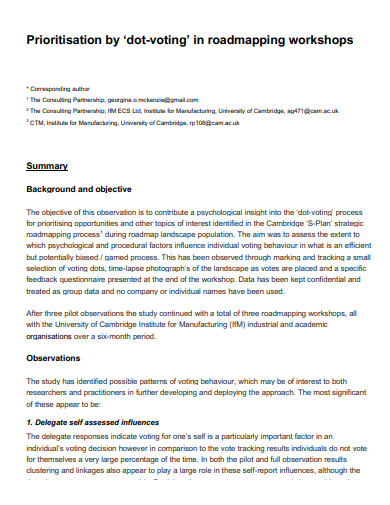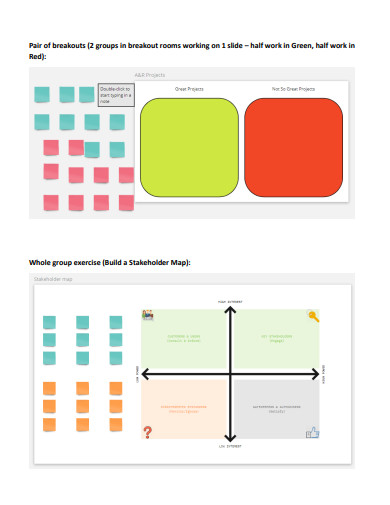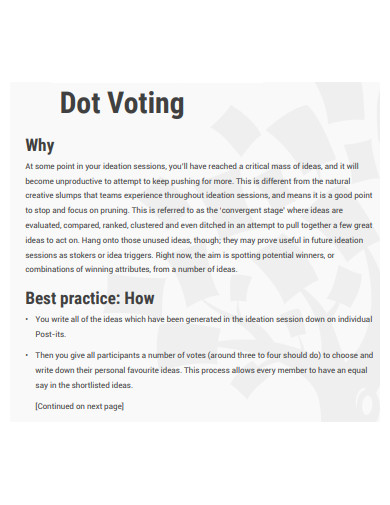Consider the last time your team needed to make a choice. The truth is that group decision-making is typically inefficient and frustrating, whether you’re attempting to settle on lunch arrangements or product strategy. When groups brainstorm ideas or solutions to an issue, they frequently end up with a plethora of possibilities to filter through and prioritize. However, reaching an agreement on the best idea or the most critical priorities might be challenging. Let’s define dot voting, when to use it, and how it can assist your team in making decisions and taking action on key objectives.
10+ Dot Voting Samples
Dot voting (also known as dotmocracy, sticker voting, dot voting, or multi-voting) is a group voting mechanism used to determine a team’s selections from a list of possibilities. In other words, it’s a fast and simple decision-making method for narrowing down possibilities, prioritizing ideas, and determining the most popular selections. Dot voting is renowned because it is fast, easy, and intuitive. It allows participants to express their choice for numerous options and is less time-consuming than doing a comprehensive, comparative ranking of all possibilities. Simply type “stick” and you’re done.
1. Dot Voting
2. Dot Voting Technique
3. Virtual Dot Voting
4. Sample Dot Voting
5. Simple Dot Voting
6. Dot Voting Example
7. Basic Dot Voting
8. Dot Voting Result Template
9. Formal Dot Voting
10. Dot Voting Example
11. Printable Dot Voting
Dot Voting Process
Gather materials
Your resources will be determined by what is voted on and how you vote. Dot voting is most typically used to vote on alternatives depicted on sticky notes (which are usually hung on a wall or whiteboard) or as a printed list on a big, easel-sized pad of paper. Because of their versatility, dot stickers are the most often used voting method. Votes can be cast with just a mark in cost-sensitive or spontaneous situations (with a pen or marker).
Specify voting constraints
Remind them of the purpose and importance of voting before they cast their ballots. Why are they voting, and what will be done with the results? Inform participants of the number of votes they will receive. As a general rule, assign each person a number of votes equivalent to roughly a quarter of the entire number of alternatives available. In many circumstances, it may be worthwhile to add another constraint: participants must vote on the criteria for which they have either 1) ownership or 2) knowledge.
Vote
Participants are asked to vote silently. The discussion should not be resumed until each member has placed their dot or mark. There will be no lobbying during the election process.
Calculate outcome
After everyone has voted, everyone can gather and discuss the results. When dots are employed, the content takes on the appearance of a heat map (with concentrated dots in areas that received most votes). Participants might debate why they voted for specific options or analyze next moves now that a communal evaluation has been obtained, depending on the purpose of the dot voting.
Potentially narrow and revote
If there is a tie among the top selections or more prioritization is required, the group can deliberate again to choose a clear winner. Re-assign the same amount of votes to each registrant, but only allow votes on the top possibilities (often 2–4) that resulted from the previous vote.
FAQs
When to use dot voting?
Dot voting is a useful facilitation tool for ideation or online brainstorming sessions, workshops, and collaborative activities. This makes it particularly valuable in UX design environments for prioritizing features and usability discoveries, assessing user insights, deciding between various prospective research projects, gathering data for a decision matrix, and ranking other concepts that require group consensus.
How do you generate ideas or list a set of alternatives?
Put each thought on a sticky note and paste it on the board or the wall. You can also discuss virtually, which is especially useful if members are working from home or at different offices.
Dot voting is an essential, adaptable action that every UX practitioner should be familiar with. You have the option of doing it swiftly or slowly, manually (with dots) or virtually (using a tool or survey). There are no rules; tailor the technique to the demands of your group, context, and aim.
Related Posts
FREE 7+ Sample Business Operating Agreement Templates in MS ...
FREE 10+ Event Meeting Minutes Samples in PDF DOC
FREE 10+ Office Meeting Minutes Samples in PDF DOC
FREE 10+ Administrative Meeting Minutes Samples in PDF DOC
FREE 10+ Political Consulting Contract Samples in MS Word ...
FREE 10+ Operations Meeting Minutes Samples in PDF DOC
FREE 10+ Group Meeting Minutes Samples [ Youth, Working, Project ]
FREE 9+ Election Brochure Templates in PSD EPS | MS Word ...
FREE 10+ Monthly Meeting Minutes Samples [ Board, Safety, Staff ]
FREE 6+ Startup Business Partnership Agreement Samples in PDF ...
FREE 10+ Trustee Meeting Minutes Samples in MS Word Google ...
FREE 10+ Training Meeting Minutes Samples [ Committee, Course ...
FREE 10+ Small Business Meeting Minutes Samples in MS Word ...
FREE 41+ Sample Paper Templates in MS Word PDF
FREE 10+ Job Contract Proposal Samples in MS Word Google ...
